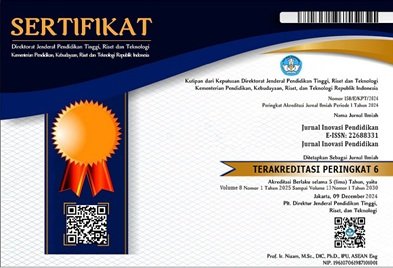ANALISIS WACANA MELALUI PENDEKATAN SOSIOLOGI SASTRA PADA NOVEL “LAUT BERCERITA” KARYA LAILA S. CHUDORI
Kata Kunci:
Novel, Laut, Pendekatan SosiologisAbstrak
Penelitian ini bertujuan untuk mengidentifikasi peristiwa sosial, fakta sosial, dan perilaku masyarakat yang terdapat dalam novel Laut Bercerita karya Leila S. Chudori. Metode penelitian yang digunakan adalah pendekatan deskriptif kualitatif dengan menggunakan data sekunder dan primer. Data diperoleh melalui pembacaan langsung sumber aslinya, yaitu narasi dalam novel, untuk mengungkap fakta-fakta melalui kata-kata, kalimat, dan paragraf. Hasil penelitian menunjukkan bahwa latar belakang novel ini mencerminkan peristiwa yang terjadi pada masa transisi dari Orde Baru menuju reformasi. Dapat disimpulkan bahwa Orde Baru merupakan periode pemerintahan Soeharto. Meskipun terjadi ledakan ekonomi, namun dalam novel ini juga menggambarkan penderitaan yang dialami oleh masyarakat umum dan aktivis mahasiswa yang seringkali dibungkam suaranya. Masa reformasi ditandai dengan runtuhnya kepemimpinan Soeharto dan suksesi B.J. Habibi. Novel ini menunjukkan keterkaitan dengan realitas sosial dan mengandung sejarah, Cerita yang dibungkus dengan suasana mencekam, dibalik kisah hilangnya 13 aktivis yang menghilanag pada masa itu meninggalkan traumatis dan membuat kita bertanya kemana dan apa yang dilakukan kepada merepa masa itu. Pembaca generasi penerus diharapkan dapat membuka wawasannya terhadap sejarah yang terjadi di negaranya.
This research aims to identify social events, social facts and community behavior contained in the novel Laut Bercerita by Leila S. Chudori. The research method used is a qualitative descriptive approach using secondary and primary data. Data was obtained through direct reading of the original source, namely the narrative in the novel, to reveal facts through words, sentences and paragraphs. The research results show that the background of this novel reflects events that occurred during the transition from the New Order to reform. It can be concluded that the New Order was the period of Soeharto's rule. Even though there was an economic boom, this novel also depicts the suffering experienced by the general public and student activists whose voices are often silenced. The reform period was marked by the collapse of Suharto's leadership and the succession of B.J. Habibi. This novel shows a connection with social reality and contains history. The story is wrapped in a tense atmosphere, behind the story of the disappearance of 13 activists who disappeared at that time, leaving a trauma and making us ask where and what was done to them at that time. It is hoped that the next generation of readers will be able to broaden their insight into the history that occurred in their country.





